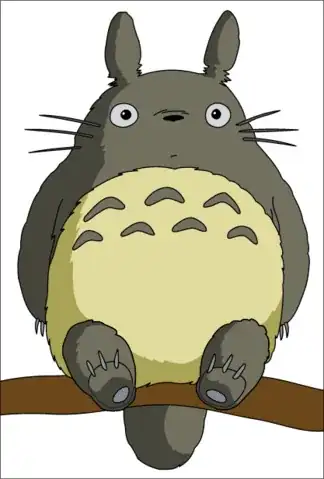For one thing, the image of Totoro is part of Studio Ghibli's (one of the most famous and critically acclaimed animation studios) logo:

The second thing is that the movie appeals highly to both children and adults. In a paper by Rieko Okuhara titled "Walking Along With Nature: A Psychological Interpretation of My Neighbor Totoro", she starts with:
Why did My Neighbor Totoro capture the hearts of the Japanese people, including my mother, so strongly? So popular in Japan is My Neighbor Totoro that people say every Japanese family owns a copy and that every Japanese child knows Totoro. On the surface, the story is quite simple and easy to follow. The cute cuddly characters seem universally appealing. Adults may be reliving cherished childhood memories, for the film takes place in a village in Japan and portrays the post-World War II countryside in detail. But is its adult appeal just nostalgia for the forgotten days of long ago?
...
The lovable features of the characters are a major reason for the popularity of the film. Totoro and his friends are furry and look like stuffed animals. Totoro, or Big Totoro (Oh Totoro), is the main advertising icon for Studio Ghibli, and products featuring Totoro are popular among both children and adults. Medium Totoro (Chu Totoro), Little Totoro (Chibi Totoro), Catbus (Neko Basu), and Mei are also favorite characters of My Neighbor Totoro fans. Catbus is not really "cute" per se; he strongly recalls the Cheshire Cat from Alice in Wonderland with his big grin. Tanaka compares Catbus with a Japanese cat monster (bake neko) because of his big eyes that see through the dark and his big mouth that lets out a horrifying noise. Yet fans find Catbus adorable and enjoy the humor in the way he runs on narrow electric cables and jumps over trees. The fantasy world where Totoro and his friends belong appears almost dream-like, and Mei and Satsuki wonder several times if Totoro and his friends live in their dream world. The creatures' amiable woolly features make the children wonder even more if all the spirits are characters from their dreams. In one scene, the sisters describe the night they spend with the spirits as "a dream, but not a dream", which is exactly how they experience their time with the spirits of nature. It is easy to understand how the adorable features and comic actions of these animal-like spirits make them everyone's favorites, but this does not explain why Mei is considered a favorite character. Mei seems to have something special that appeals to adults and children, which is not clear at first glance.
Last year, Biglobe reported that "Totoro" was the most used word on Japanese Twitter
Wikipedia mentions some reasons for Totoro's ubiquity:
My Neighbor Totoro helped bring Japanese animation into the global spotlight, and set its writer-director Hayao Miyazaki on the road to success. The film's central character, Totoro, is as famous among Japanese children as Winnie-the-Pooh is among British ones. The Independent recognized Totoro as one of the greatest cartoon characters, describing the creature, "At once innocent and awe-inspiring, King Totoro captures the innocence and magic of childhood more than any of Miyazaki's other magical creations." The Financial Times recognized the character's appeal, "[Totoro] is more genuinely loved than Mickey Mouse could hope to be in his wildest—not nearly so beautifully illustrated—fantasies."
The environmental journal Ambio described the influence of My Neighbor Totoro, "[It] has served as a powerful force to focus the positive feelings that the Japanese people have for satoyama and traditional village life." The film's central character Totoro was used as a mascot by the Japanese "Totoro Hometown Fund Campaign" to preserve areas of satoyama in the Saitama Prefecture. The fund, started in 1990 after the film's release, held an auction in August 2008 at Pixar Animation Studios to sell over 210 original paintings, illustrations, and sculptures inspired by My Neighbor Totoro.
A main-belt asteroid was named 10160 Totoro after the film's central character Totoro.
The ubiquity of Totoro seems less about marketing and more about how great the movie and its characters are perceived, especially in Japan, and by both children and adults. In Roger Ebert's review of the movie said the movie was "based on experience, situation and exploration—not on conflict and threat". So the imagery of Totoro is both iconic and positive.
I don't know where the Okuhara paper gets the source that "every Japanese family owns a copy [of the movie] and that every Japanese child knows Totoro", but it would seem that the movie itself is better known than simply Totoro toys.

